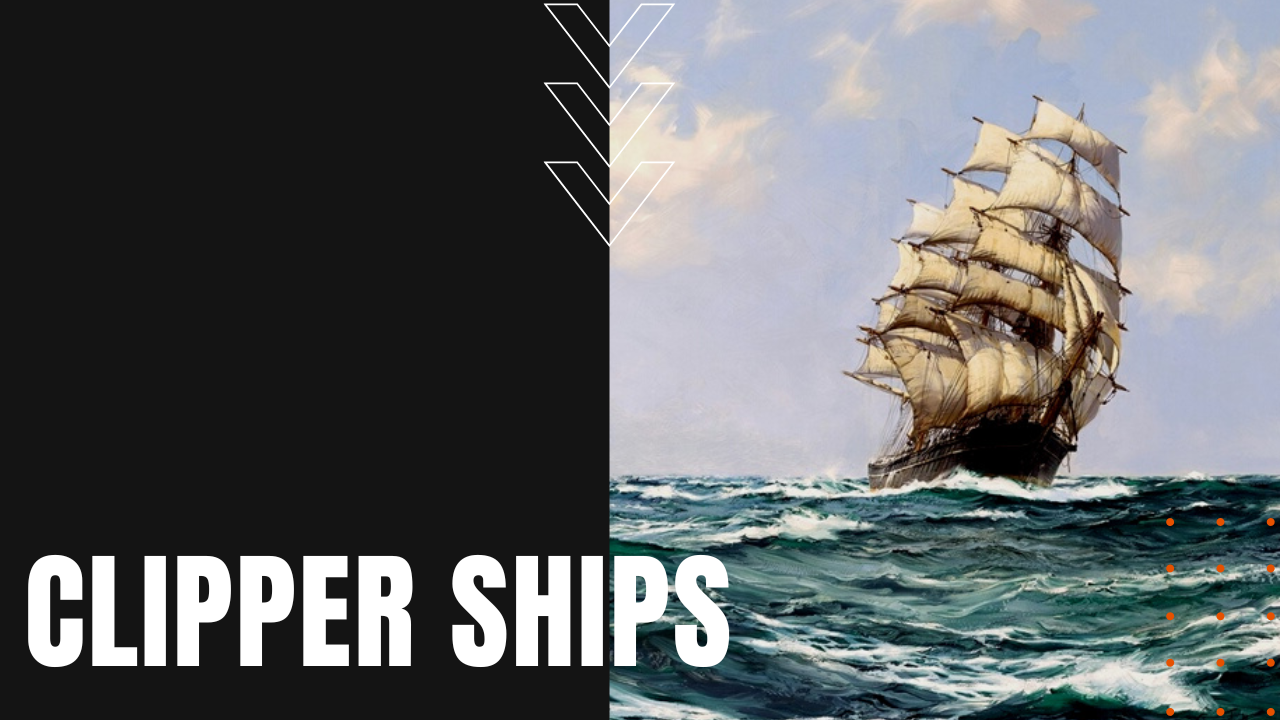Clipper Ships: Construction, Trade, Speed, and More

Born on the Chesapeake Bay from 1795 to 1815, the predecessor to the golden age of clipper ships were small, exceedingly fast sailboats with a cargo capacity less than 200 tons.
What are Clipper Ships?
Generally rigged as schooners or brigantines, their hulls were sharp-ended with a steep deadrise, which eventually morphed into Baltimore clipper ships like the Chasseur, which was built at a Baltimore shipyard in 1814. Known for their deep drafts, which allowed them to sail closer to the wind, Baltimore clippers soon gained a reputation for unheard-of sailing speeds, which allowed them to outrun Great Britain’s blockade of American ports during the War of 1812.
What were Clipper Ships Used For?
From the 1810s through the 1820s, Baltimore clippers were generally used by slave smugglers or privateers. By the late 1830s, however, merchants importing high-value goods from China expanded the Baltimore clipper’s design during the golden age of the clipper ship, which saw the introduction of three-masted, full-rigged ships with square sails, built for speed rather than cargo capacity.
Nautical designers during the 1840s and 50s sharpened the bow and the stern of their designs, at the same time adding so much sail area that clipper ship merchants were obliged to employ 50 to 60 crew members per clipper to handle such massive amounts of canvas.
Deadly Trade With China
Clippers generally imported expensive teas from China, or shipped dry goods and provisions to San Francisco during the high-water years of the Gold Rush. Clipper ship merchants also smuggled opium into China, by offering bribes to corrupt Chinese officials who were otherwise charged with blocking opium from entering Chinese ports. As a result, millions of Chinese peasants became addicted or died from opium, leading to the Opium Wars that ushered in China’s “century of humiliation.”
Record-Setting Speed and Obscelecence
Many clipper merchants challenged their skippers and crews to break sailing records held by competitors, leading Captain Josiah Creesy aboard the massive clipper ship, Flying Cloud, to make a record-setting passage from New York to San Francisco in 1854 in just 89 days and 21 hours—a record that would stand until a racing yacht named Thursday’s Child beat Creesy’s time by eight days in 1989.
The golden age of clipper ships ended with the advent of railroads, first across the Isthmus of Panama, and later across the American continent, which stripped profitability from low-capacity clipper ships. The advent of steamships and trans-Atlantic communication cables further hastened their demise, sending once majestic clipper ships to watery graves the world over.
